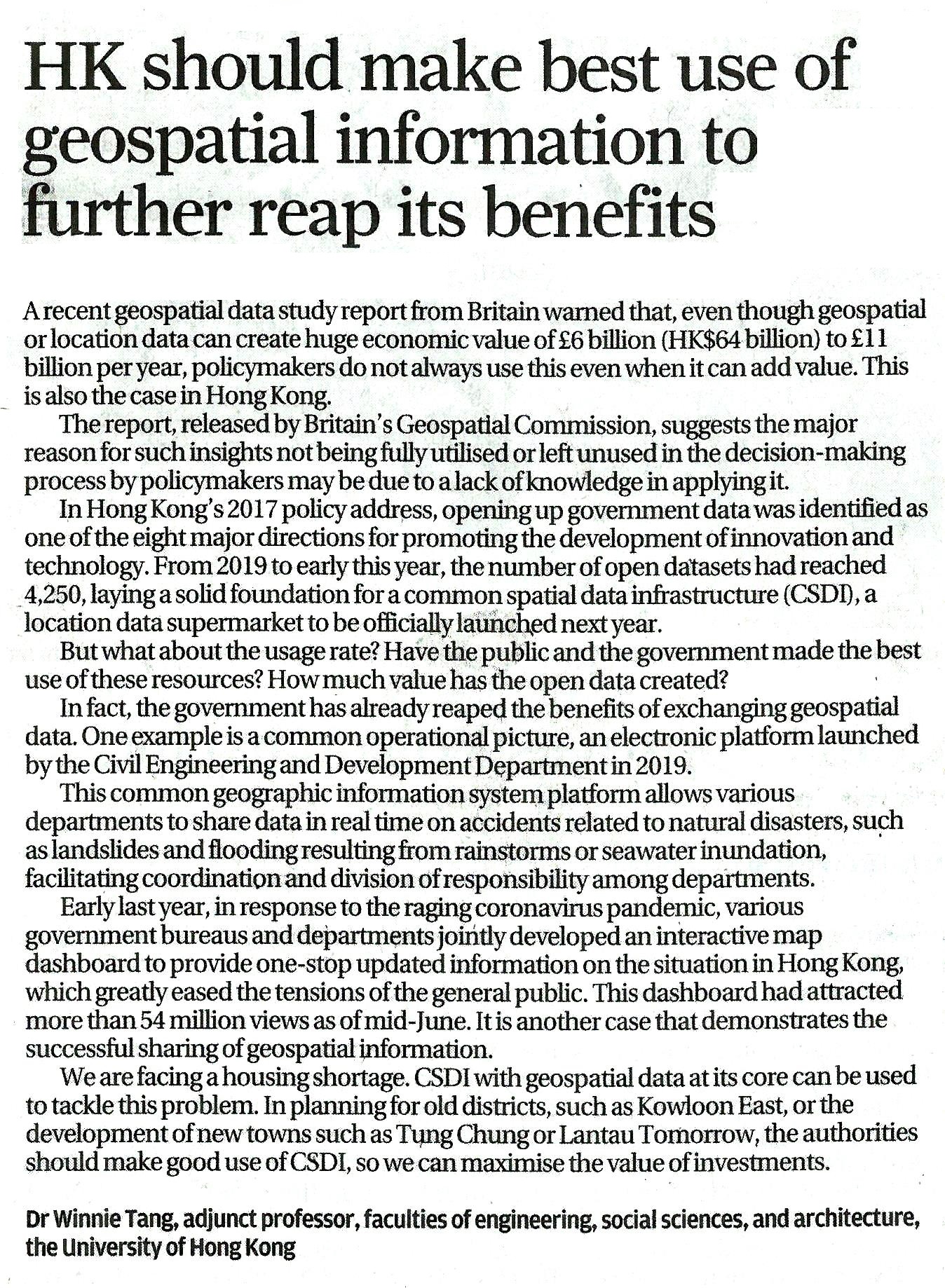網上版請按此

HK should make best use of geospatial information to further reap its benefits
A recent geospatial data study report from Britain warned that, even though geospatial or location data can create huge economic value of £6 billion (HK$64 billion) to £11 billion per year, policymakers do not always use this even when it can add value. This is also the case in Hong Kong.
The report, released by Britain's Geospatial Commission, suggests the major reason for such insights not being fully utilised or left unused in the decision-making process by policymakers may be due to a lack of knowledge in applying it.
In Hong Kong's 2017 policy address, opening up government data was identified as one of the eight major directions for promoting the development of innovation and technology. From 2019 to early this year, the number of open datasets had reached 4,250, laying a solid foundation for a common spatial data infrastructure (CSDI), a location data supermarket to be officially launched next year.
But what about the usage rate? Have the public and the government made the best use of these resources? How much value has the open data created?
In fact, the government has already reaped the benefits of exchanging geospatial data. One example is a common operational picture, an electronic platform launched by the Civil Engineering and Development Department in 2019.
This common geographic information system platform allows various departments to share data in real time on accidents related to natural disasters, such as landslides and flooding resulting from rainstorms or seawater inundation, facilitating coordination and division of responsibility among departments.
Early last year, in response to the raging coronavirus pandemic, various government bureaus and departments jointly developed an interactive map dashboard to provide one-stop updated information on the situation in Hong Kong, which greatly eased the tensions of the general public. This dashboard had attracted more than 54 million views as of mid-June. It is another case that demonstrates the successful sharing of geospatial information.
We are facing a housing shortage. CSDI with geospatial data at its core can be used to tackle this problem. In planning for old districts, such as Kowloon East, or the development of new towns such as Tung Chung or Lantau Tomorrow, the authorities should make good use of CSDI, so we can maximise the value of investments.
Dr. Winnie Tang
Adjunct Professor, Department of Computer Science, Faculty of Engineering; Department of Geography, Faculty of Social Sciences; and Faculty of Architecture, The University of Hong Kong